Are you also amazed by wall-mounted PC builds? Well, who wouldn’t be right? They make traditional desktops look boring by looking wicked and awesome. They are like art hanging off our walls.
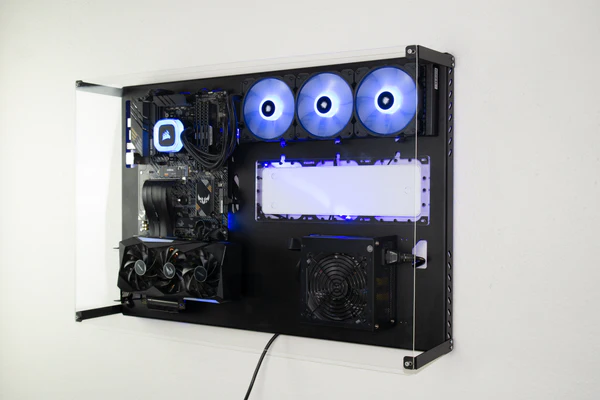
Well, if you have been thinking of building one, then you’re in luck. In this guide, we will talk about the basics of building it. On top of that, we will also discuss several pros and cons of having them.
Let’s get started.
Key Takeaways
- There are three ways to build a wall-mounted PC. You can use a pre-built case, a custom case, or a wall-mount mod kit.
- To build one you need to first pick a baseboard material, draw everything and make holes, then assemble your PC, and finally mount it on the wall.
- Such PCs look good, provide better cooling, and save up space. But, they are also difficult to build, inconvenient to maintain, and prone to damage.
How To Build A Wall-Mounted PC
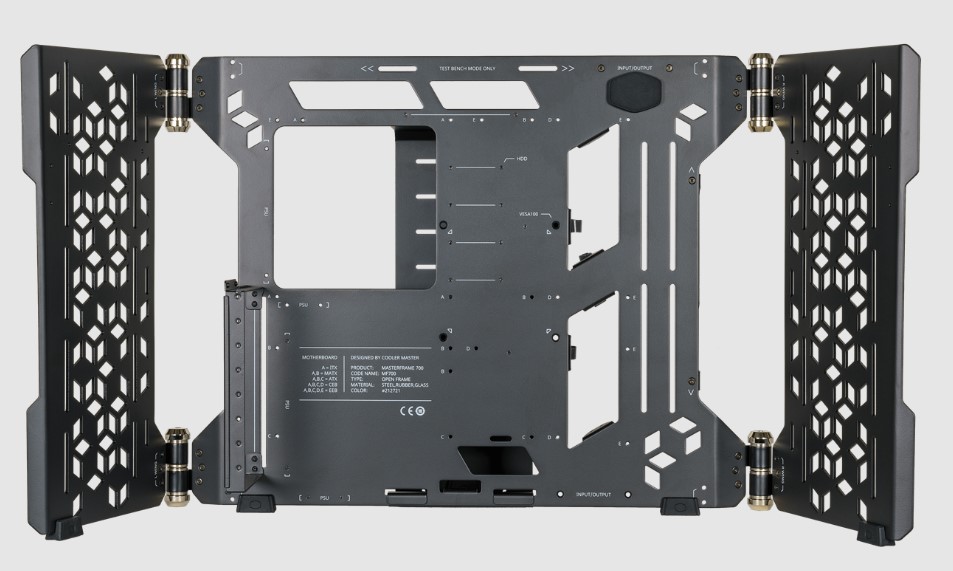
To mount a PC on the wall, you have three options. First, you can take the easy route and go with a wall-mount PC case. Many companies like Thermaltake and Cooler Master offer gorgeous yet practical PC cases that you can mount on your wall without difficulties. These pre-built wall mount cases are quite straightforward, and if you don’t have many DIY skills, then you should go with them.
Second, if you’re on a budget and want to mount your existing PC case on the wall, then you can use a wall mount PC mod kit[1] to hang your existing PC on the wall. This way, you won’t have to spend extra on another case, nor would you have to build a case from scratch. However, it also might not look as gorgeous as the first or third option.
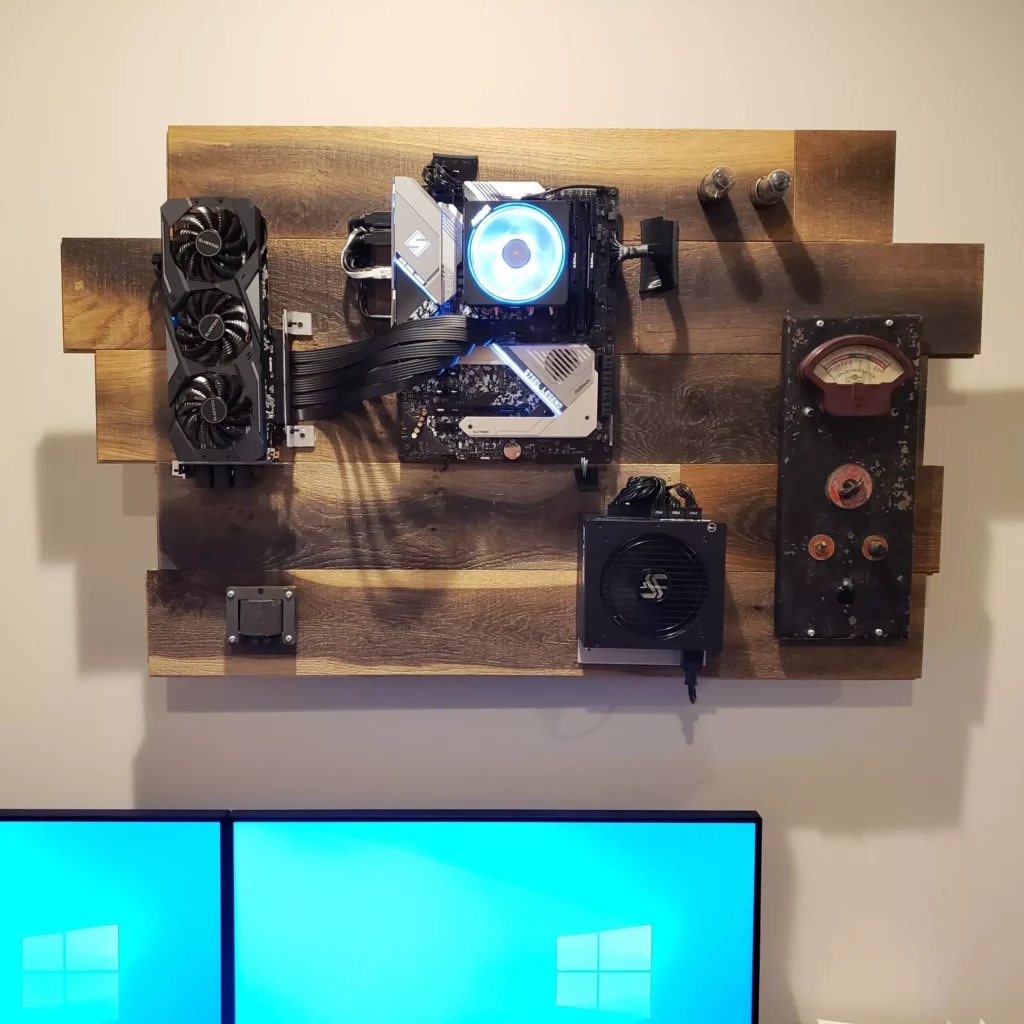
The third option is to build a custom wall-mount PC case. This option can be difficult for novice users, but if you enjoy making things and have some DIY skills, you can pull it off without any issues.
Basics Of A Custom Wall-Mounted PC
To start with the custom wall mount PC case, you need to plan everything, and that doesn’t mean only planning out the compatibility of your PC components. It also means you must figure out how to put everything together on the wall.
You can begin by drawing sketches on paper. Take measurements of your components, and draw how every component should be placed to fit perfectly on the baseboard. Make sure to consider cable management.
If you want to go the extra mile, then you can also use multiple baseboards to spread your components across the wall. However, keep in mind that it requires extra cables and adjustments.
- Baseboard Material: When selecting a baseboard material for a custom wall-mounted computer, prioritize strength, adequate thickness for screws, and weight considerations. Metal baseboards offer strength but can be heavy and affect grounding. Plastic options, like acrylic, provide a lighter alternative without compromising durability. Wood, particularly plywood[2], is a popular choice due to its strength, ease of drilling, and manageable weight, making it ideal for ensuring stability without excessive bulk.
- Drilling: After choosing a baseboard material, ensure it accommodates all components comfortably and mark mounting holes on both the wall and baseboard. For drywall installations, anchor to studs using a stud detector or by tapping for studs. Drill mounting holes according to screw thickness and size, allowing for 2-3mm of additional space for adjustments. Lay out components on the baseboard, considering cable management, and mark screw positions before drilling.
- Assembly Time: Begin assembly by securing the motherboard, power supply, GPU, and any additional components using appropriate screws and cables. Finalize liquid-cooling tubing and integrate RGB lighting as desired before proceeding to cable management.
- Cable Management: Organize cables behind the baseboard, utilizing extra space between the baseboard and wall or a secondary baseboard for concealed management. Alternatively, hide cables within the wall for a cleaner aesthetic, although this method requires more expertise. Consider themed builds using RGB cables to showcase cable management creatively.
- Testing and Mounting: Prior to mounting the PC on the wall, ensure all components are recognized and functional. Once verified, enlist assistance to lift and align the PC with previously drilled holes, using durable screws to secure it gradually and evenly.
When building a custom wall-mounted PC, here are extra few things that you should know:
- Power Button: You must use an external power button to turn on your computer. That’s because, in traditional PC cases, there is a built-in power button that you can use. However, in a wall-mounted setup, you can either jump-start your PC[3] or use an external power button.
- USB Hub: When your PC is hanging on the wall, you wouldn’t want to get up to plug in an external component every time. So, you can invest in a USB hub for ease of access. If you want to use wired headphones, you can buy a USB hub with an audio jack.
- Dealing With Dust: If you think there is a lot of dust going on in your PC, then you can add a sheet of plexiglass to add some protection. However, it would require additional redesigning and work.
Advantages
- Visual Appeal: Wall-mounted computers offer a unique and visually stunning alternative to traditional desktop setups. Their elevated position allows for showcasing high-end components, custom RGB lighting, and liquid cooling systems, enhancing the overall aesthetic appeal of the gaming rig.
- Improved Cooling: With fewer obstructions surrounding the PC, wall-mounted setups benefit from enhanced airflow, resulting in better cooling performance. The increased space around the fans facilitates efficient air intake and heat dissipation, contributing to improved system performance.
- Space-saving: Mounting a PC on the wall frees up valuable desk space, making it an attractive option for those seeking a more streamlined and clutter-free setup. Utilizing wall space for the PC allows for better organization and utilization of available room space.
Disadvantages
- Complex Build Process: Constructing a custom wall-mounted setup requires additional effort, time, and expertise compared to assembling a traditional PC. From drilling holes in the wall to precise measurements, the build process can be challenging and time-consuming.
- Maintenance Challenges: Wall-mounted PCs are more susceptible to dust accumulation and require frequent cleaning due to their exposed positioning. Additionally, replacing components can be cumbersome, often necessitating the removal of the PC from the wall, especially in pre-built wall-mount cases or mod kits.
- Risk of Damage: Wall-mounted PCs are vulnerable to physical damage, with potential points of failure and increased risk of accidents. Factors such as earthquakes or accidental drilling can pose a threat to the integrity of the setup, requiring careful consideration of mounting and reinforcement methods to minimize risks.
Summary
In this guide, we have covered all the basics of a wall-mounted PC. There are three ways to mount a PC: buy a pre-built case, a wall-mount mod kit, or build a custom case.
Building a custom case is not an easy task, and it involves lots of skills. First, you need to sketch the layout of your PC and then decide which baseboard material to use. After that, you need to mark holes and start drilling. Once that’s done, you can assemble your PC and test it. Finally, you can mount it on the wall.
We also discussed the advantages and disadvantages of wall-mounted setups. For instance, they look gorgeous, have better cooling, and save up space. However, they are also difficult to build, inconvenient to maintain, and at a greater risk of physical damage.
Other Helpful Resources By Tech4Gamers:
References:
- Oeveo. (n.d). PC Wall Mounts. Retrieved from: https://www.oeveo.com/637-pc-wall-mounts
- T. Akgul, A.C. Apay, E. Aydin, Y. Sumer. (2015) Study of Bending Strength and Numerical Modeling of
Wooden and Plywood Frame Elements. Retrieved from: http://przyrbwn.icm.edu.pl/APP/PDF/127/a127z4p151.pdf - Intel. (n.d). Why Won’t My Computer Turn On? Retrieved from https://www.intel.com/content/www/us/en/gaming/resources/why-wont-my-computer-turn-on.html
FAQs
The answer to that question depends totally on you and your preferences. If you can build and maintain one, and if you love the way it looks, then you should totally go for it. However, if you think that the risk of damage and the inconvenience is not worth the visuals, then you should skip this form factor.
If you love the visuals of a wall-mount case and you’re not excited about all the challenges that building a custom case comes with, then you should go for a pre-built case.
Yes, you can mount your existing PC on the wall either with a wall-mount mod kit or by moving its components to a pre-built wall-mount case.
Thank you! Please share your positive feedback. 🔋
How could we improve this post? Please Help us. 😔
[Wiki Editor]
Ali Rashid Khan is an avid gamer, hardware enthusiast, photographer, and devoted litterateur with a period of experience spanning more than 14 years. Sporting a specialization with regards to the latest tech in flagship phones, gaming laptops, and top-of-the-line PCs, Ali is known for consistently presenting the most detailed objective perspective on all types of gaming products, ranging from the Best Motherboards, CPU Coolers, RAM kits, GPUs, and PSUs amongst numerous other peripherals. When he’s not busy writing, you’ll find Ali meddling with mechanical keyboards, indulging in vehicular racing, or professionally competing worldwide with fellow mind-sport athletes in Scrabble at an international level. Currently speaking, Ali has completed his A-Level GCEs with plans to go into either Allopathic Medicine or Business Studies, or who knows, perhaps a full-time dedicated technological journalist.
Get In Touch: alirashid@tech4gamers.com


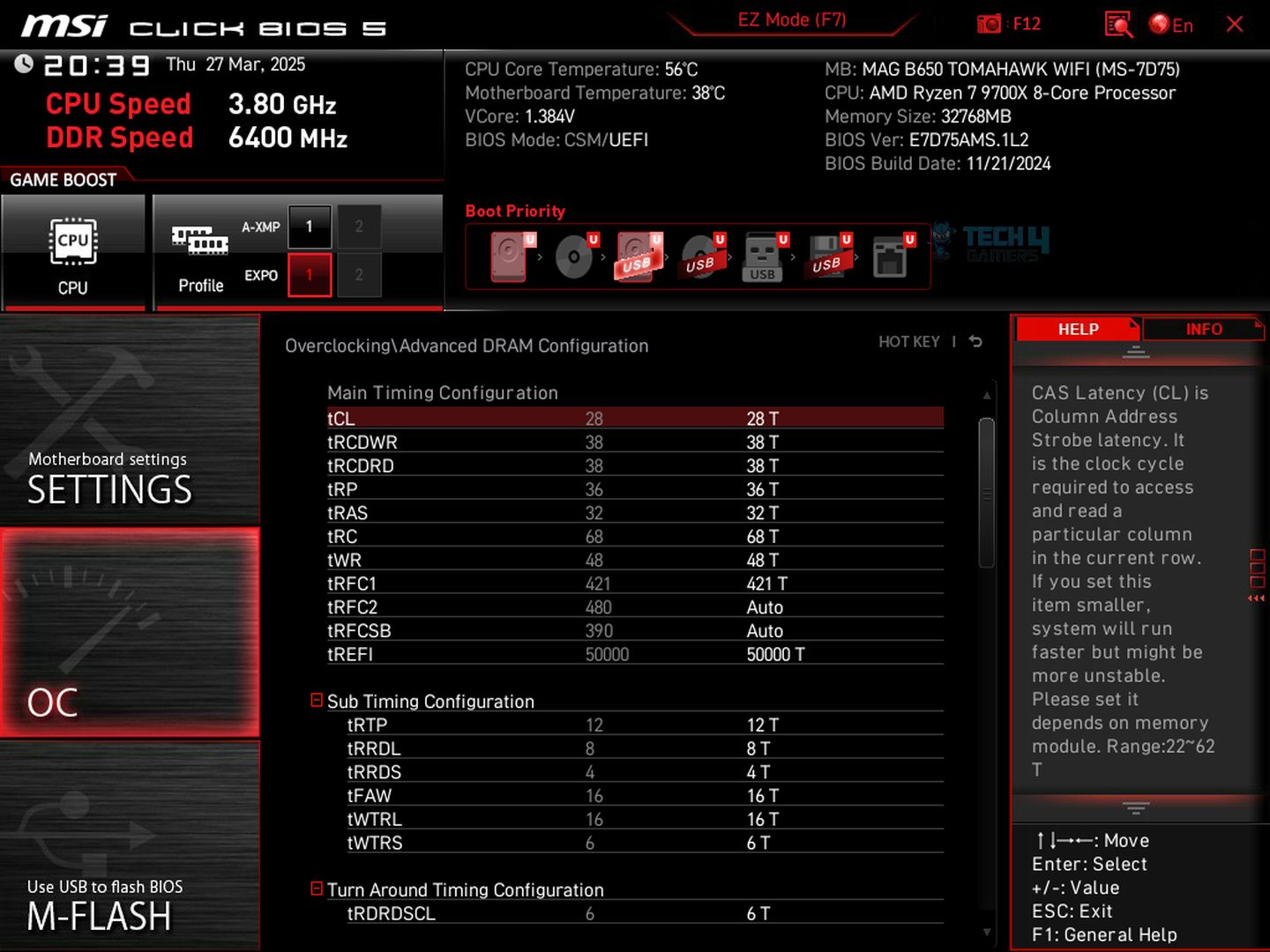

![AMD EXPO [Features & How You Can Enable It]](https://tech4gamers.com/wp-content/uploads/2024/08/CORSAIR-VENGEANCE-RGB-DDR5-RAM-32GB-2x16GB-6000MHz-CL30-AMD-EXPO-RGB-Lighting-3-218x150.jpg)
![Intel XMP [What, Why, & How] XMP Profile](https://tech4gamers.com/wp-content/uploads/2024/03/XMP-Profile-218x150.jpg)
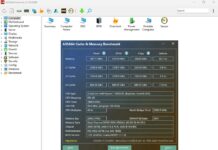
Feedback By: